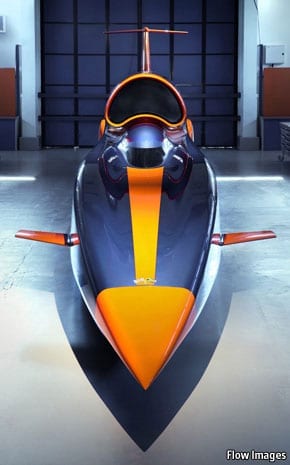
THIS summer Daniel Jubb will perform the equivalent of lighting the blue touch paper and standing clear.
The 27-year-old will undertake the first full test firing of a hybrid rocket which he has designed to help a British team set a new land-speed record by driving at 1,000mph (1,609kph). Mr Jubb’s rocket, however, will also need the assistance of a powerful EJ200 jet engine from a Typhoon fighter aircraft and a Cosworth Formula 1 racing engine if Bloodhound SSC (supersonic car) is to become the fastest thing on wheels.
Combining a rocket, a jet and a racing-car engine into one vehicle is engineering of an extreme sort, but record-breaking often demands that new problems be solved. Mr Jubb’s task was to build a rocket that could be used safely in a car, but was also controllable and could be switched off quickly in the event of an emergency.
A rocket works by burning fuel with an oxidiser, which provides a source of oxygen for combustion. The hot exhaust gases are then blasted through a nozzle to produce thrust. Rockets using liquid propellants can be shut down reasonably easily by turning off the pumps delivering the fuel and oxidiser, but they tend to be complex and their propellants, such as liquid hydrogen and liquid oxygen, difficult and hazardous to handle.
Solid-fuel rockets, in which the fuel and oxidiser are pre-mixed into a stable, solid propellant and then packed inside the case of the rocket, are simpler, lighter and relatively safer. But once a solid-fuel rocket is ignited, it is off like a firework and keeps going until all the fuel is burned up. About the only way to stop it is to blow it apart. In a car, that would not do.









